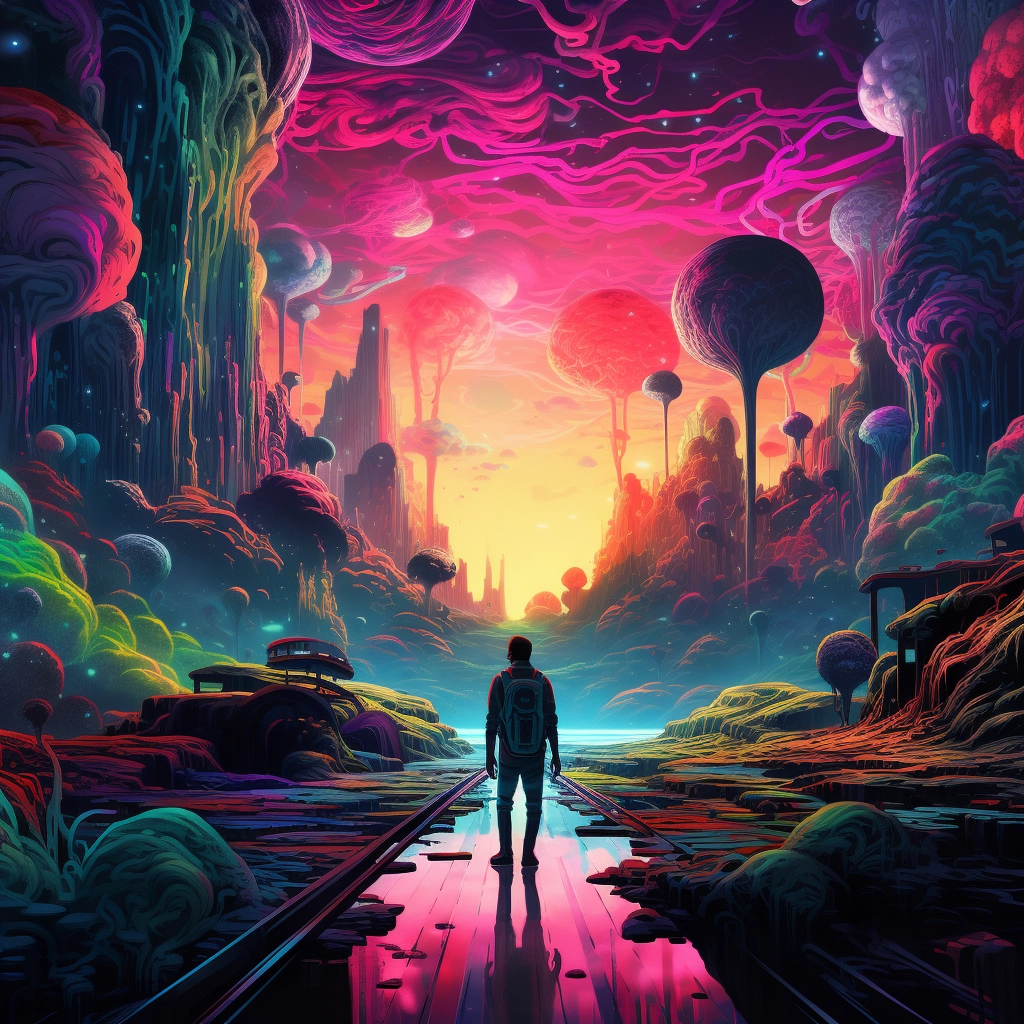The Forest and the Falling Tree: A Timeless Riddle
Our quest begins with a classic philosophical riddle that you’ve probably pondered before: “If a tree falls in a forest and no one is around to hear it, does it make a sound?” It’s a deceptively simple question, one that has confounded deep thinkers for generations, and it delves into the intricate interplay between consciousness and reality.
Now, let’s introduce one of the most enigmatic thought experiments in the realm of quantum mechanics: Schrödinger’s Cat. Imagine a cat locked within a sealed box alongside a radioactive atom and a vial of poison. If the atom decays, the vial shatters, and the cat meets its end. If it doesn’t decay, the cat survives. Before you open the box to check, the cat exists in a superposition of states – both alive and dead at the same time. It’s only when you observe it that the cat’s fate becomes certain. This perplexing scenario encapsulates the strange nature of quantum mechanics.
Schrödinger’s Cat and Quantum Mechanics: A Glimpse into the Uncanny
So, how does Schrödinger’s Cat tie into the idea that consciousness is a key player in rendering reality? In the quantum world, particles can simultaneously occupy multiple states until someone observes them. This implies that the mere act of observation, driven by consciousness, collapses these superpositions into distinct outcomes. This suggests that our conscious presence is fundamentally involved in shaping the reality we perceive.
But the implications don’t stop at quantum mechanics. This notion delves to the heart of our existence. What if the universe we inhabit is a grand quantum stage, where potential realities exist until we, as observers, bring them into existence? This is where the analogy of video games comes into play.
The World of Video Games: A Parable for Reality
In video games, the environment isn’t entirely crafted all at once. Instead, the game engine focuses on rendering only what’s within the player’s field of view. The rest of the game world exists in a digital superposition until the player turns their attention toward it. This concept is strikingly similar to Schrödinger’s Cat – the world in a state of infinite possibilities until the observer, in this case, the player’s consciousness, interacts with it.
To comprehend this concept better, let’s consider a classic game like “The Legend of Zelda.” When you explore a new area, the game doesn’t generate the entire world map simultaneously. It renders only what’s on your screen. Mountains, valleys, enemies, and treasures come into existence as you navigate through the game. This is known as “on-demand rendering.”
In many ways, our reality seems to operate on a similar principle. When we look out at the world, our consciousness acts as the player’s perspective, rendering only what’s within our field of perception. The rest remains in a potential state, akin to the unobserved quantum particles in Schrödinger’s box.
Optimization: A Shared Trait Between Video Games and Our Minds
However, the connection between video games and reality runs deeper. Game developers employ various techniques to create the illusion of a vast, interconnected world, even if most of it isn’t actively visible. They use fog, culling techniques, and other optimization methods to create the illusion of a larger world. In a way, this mirrors how we perceive our reality.
Our brains, too, engage in a form of optimization. We focus on what’s relevant to our survival and understanding of the world. This selective attention, in turn, influences our reality. What we perceive, and subsequently, what we experience, is significantly shaped by our consciousness.
The Uncertainty Principle: When Measurement Alters Reality
Let’s circle back to quantum mechanics for a moment. The Uncertainty Principle, introduced by physicist Werner Heisenberg, posits that certain pairs of properties, such as an electron’s position and momentum, cannot be known simultaneously with complete precision. The act of measurement itself impacts the system.
In a sense, this echoes the idea that consciousness, when interacting with the quantum world, alters the outcome, effectively bringing reality into existence. So, when you observe the world, you’re not merely a passive bystander but an active participant in the ongoing creation of your reality.
Conclusion: Consciousness as the Weaver of Reality
In closing, the relationship between consciousness and reality is a profound and enigmatic one. Just as in a video game, the world unfolds as we move through it, and the act of observation shapes the environment. Our awareness has a profound impact on the world we inhabit.
This concept reminds us that the boundaries of our reality may be far more malleable and interconnected with our consciousness than we’ve ever realized. The world we perceive, the experiences we have, and the choices we make are all entwined with our consciousness. The next time you contemplate the falling tree in the forest, Schrödinger’s Cat, or even your favorite video game, remember that the act of observation and the consciousness behind it might be what renders the world into existence.

